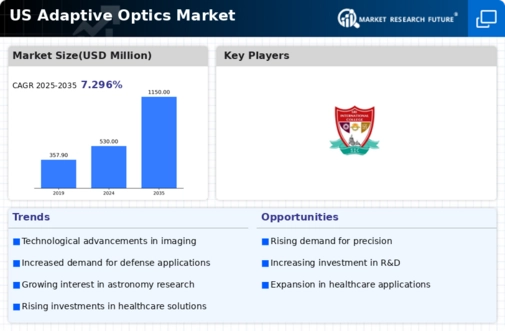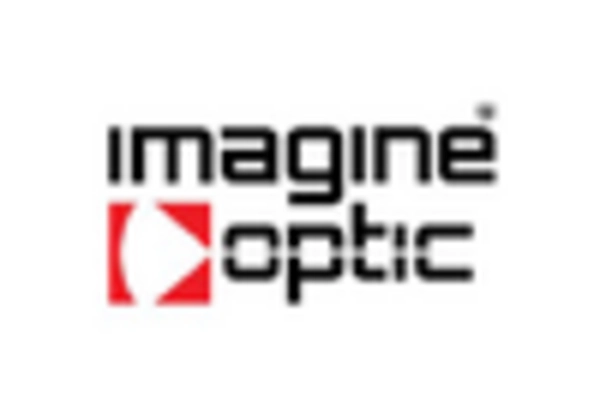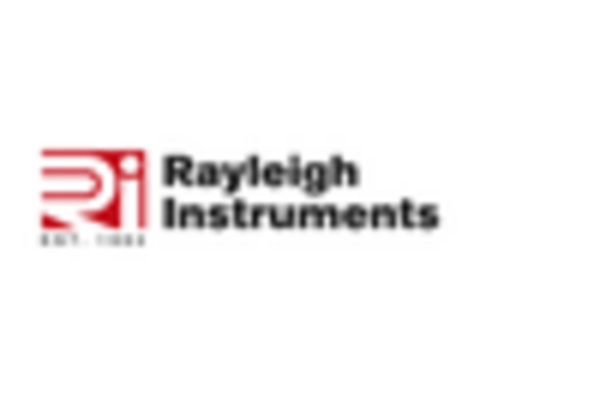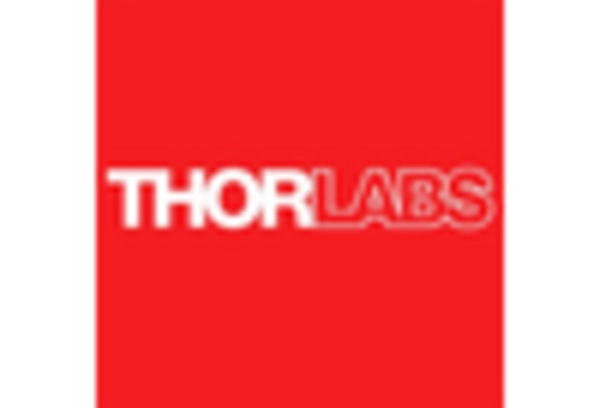Growth in Consumer Electronics
The adaptive optics market is also benefiting from the growth in consumer electronics, particularly in the fields of augmented reality (AR) and virtual reality (VR). As these technologies become more mainstream, the demand for high-quality imaging systems that can adapt to varying conditions is increasing. Companies are investing in adaptive optics to improve the user experience in AR and VR applications, which is projected to grow at a CAGR of 15% over the next five years. This trend suggests that the adaptive optics market is likely to see a significant influx of investment as manufacturers seek to enhance the performance of their devices, thereby expanding their market reach.
Rising Applications in Astronomy
The adaptive optics market is experiencing growth due to its increasing applications in astronomy. The technology enhances the resolution of ground-based telescopes, allowing astronomers to observe celestial bodies with unprecedented clarity. As the demand for high-resolution imaging in astronomical research rises, investments in adaptive optics systems are likely to increase. The market for adaptive optics in astronomy is projected to reach approximately $300 million by 2026, reflecting a compound annual growth rate (CAGR) of around 8%. This growth is driven by the need for advanced observational capabilities, which are essential for both professional and amateur astronomers. The adaptive optics market is thus positioned to benefit from ongoing advancements in telescope technology and the growing interest in space exploration.
Increased Focus on Precision Medicine
The adaptive optics market is experiencing growth due to the increased focus on precision medicine in healthcare. Adaptive optics technology allows for high-resolution imaging of biological tissues, enabling more accurate diagnostics and treatment planning. As healthcare providers seek to improve patient outcomes through personalized medicine, the demand for advanced imaging systems is likely to rise. The adaptive optics market is projected to see a growth rate of around 12% annually as healthcare institutions invest in these technologies. This trend reflects a broader shift towards integrating advanced optical systems into clinical practice, thereby enhancing the capabilities of medical professionals in diagnosing and treating complex conditions.
Surge in Defense and Security Applications
The adaptive optics market is witnessing a surge in demand from the defense and security sectors. Military applications, such as surveillance and reconnaissance, require high-precision imaging systems that can operate effectively in various environmental conditions. Adaptive optics technology enhances the performance of optical systems, making them more effective for defense purposes. The U.S. defense budget allocates significant funds for advanced imaging technologies, with estimates suggesting that the adaptive optics market in this sector could exceed $200 million by 2025. This trend indicates a robust growth trajectory for the adaptive optics market, driven by the increasing need for enhanced situational awareness and target identification capabilities.
Emerging Research and Development Initiatives
The adaptive optics market is being propelled by emerging research and development initiatives across various scientific fields. Institutions and universities are increasingly investing in adaptive optics technology to enhance their research capabilities, particularly in fields such as biomedical imaging and materials science. The adaptive optics market is expected to benefit from these initiatives, as they often lead to innovative applications and improved system designs. Funding for R&D in optics is projected to grow by approximately 10% annually, indicating a strong commitment to advancing this technology. This focus on innovation is likely to create new opportunities for market players and drive the overall growth of the adaptive optics market.

















Leave a Comment